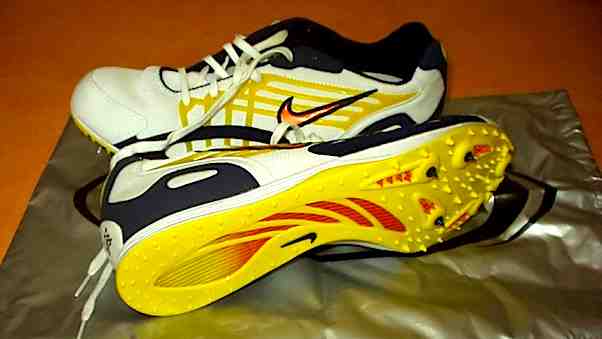
Nike Inc.’s organizational structure reflects abilities and limits in business operations. The company’s organizational or corporate structure is the composition and system design applied on the interconnections among employees, groups, and divisions of the sportswear business. Nike’s corporate structure highlights differences among regional markets. These differences are linked to region-specific demands of target customers’ preferences for shoes, clothing, and equipment based on sports popularity and climate. Nike’s organizational structure enables adjustments in dealing with market differences. Through this company structure, regional variations are included in Nike’s generic competitive strategy and intensive growth strategies. Structural and strategic alignment that considers these variations reinforces the company’s competitive advantages, especially in penetrating regional markets.
Nike Inc. has an organizational structure that facilitates regionalization of business strategies. Such regionalization promotes value chains that specifically fulfill customers’ expectations, especially in service and marketing. The characteristics of its corporate structure provide Nike with flexibility to address consumer preferences for athletic shoes, apparel, and equipment in regional markets. This flexibility is especially notable in how the company markets its products through its own NikeTown stores. This structural support, together with Nike’s organizational culture, helps the company in combating the financial and business developmental effects of competitors, such as Adidas, ASICS, Puma, and Under Armour. In relation, the company structure supports initiatives and strategies contained in Nike’s marketing mix or 4P.
Nike’s Organizational Structure Type and Features
Nike has a geographic divisional organizational structure. This structure is based on the company’s needs in its global organization, as well as the uniqueness of conditions in regional markets. The following characteristics are notable in Nike’s organizational structure:
- Global corporate leadership
- Semi-autonomous geographic divisions
- Global divisions for Converse and brand licensing
Global Corporate Leadership. Nike’s organizational structure has global corporate leadership, which involves corporate managers who represent the company’s executive hierarchy. The managers have offices in the company’s headquarters in Oregon, USA. They decide for the global corporate structure of Nike. For example, the Global Sports Marketing group releases new athletic shoe marketing campaigns for worldwide marketing. Through this feature of the organizational structure, decisions are easily implemented throughout the company. Also, new goals and strategic objectives based on Nike’s corporate mission and corporate vision are disseminated and implemented through this characteristic of the company structure. The following are the company’s global leadership groups or departments headed by a President, Executive Vice President, or Chief Officer:
- Office of the President & CEO
- Nike Brand
- Finance
- Global Human Resources
- Product & Merchandising
- Administration & Legal
- Global Sports Marketing
- Operations
Semi-Autonomous Geographic Divisions. Geographic divisions are a major organizational structure characteristic of Nike, Inc. The company’s operations are divided into segments based on regional markets. Each regional division’s managers optimize operations in the regional sports shoes, apparel, and equipment market. Nike’s organizational structure has the following regional divisions:
- North America
- Western Europe
- Central & Eastern Europe
- Greater China
- Japan
- Emerging Markets
Through geographic divisions, this business structure allows strategies to match region-specific industry variables, such as the competitive factors shown in the Five Forces analysis of Nike. Similarly, corporate management can use these divisions to tailor strategic decisions based on external factors specific to geographic regions. For example, the social and economic trends and external factors identified in the PESTLE/PESTEL analysis of Nike are effectively considered through the geographic divisions of this company structure.
Global Divisions for Converse and Brand Licensing. Nike’s organizational structure also has two global divisions: one for the Converse brand and another for brand licensing. One global division is responsible for managing the worldwide operations of Converse, which is another footwear brand and subsidiary of Nike Inc. Another global division is responsible for licensing the Nike brand. This characteristic of the corporate structure offers control for brand licensing and the operations of Converse. The brand and related competencies shown in the SWOT analysis of Nike are optimized through these divisions of the corporate structure. Control on brand licensing enables the sporting goods company to focus on operations and licensees that can maximize the benefits of these brands. Thus, Nike’s business structure and organizational design contribute to business competitiveness.
Advantages & Disadvantages of Nike’s Structure
Nike Inc.’s organizational structure’s characteristics support growth and stability. Global corporate leadership has the advantage of facilitating control over the entire organization. The advantage of the semi-autonomous regional (geographic) divisions is flexibility in satisfying regional market-specific consumer preferences for the company’s athletic shoes, apparel, and equipment. However, a disadvantage of Nike’s organizational structure is the limited approach to managing the operations of Converse.
References
- About Nike, Inc.
- Malenko, N. (2024). Information flows, organizational structure, and corporate governance. In Handbook of Corporate Finance (pp. 511-546). Edward Elgar Publishing.
- Nike, Inc. – Form 10-K.
- Nike, Inc. – Investor Relations – Corporate Governance.
- U.S. Department of Commerce – International Trade Administration – Consumer Goods Industry.
- U.S. Department of Commerce – International Trade Administration – Textiles Industry.
- Xia, Y., Li, X., & Wang, X. (2023). The influence of organizational structure on the dynamic capability of enterprises: The regulating effect of technological innovation. Science, 11(2), 57-66.